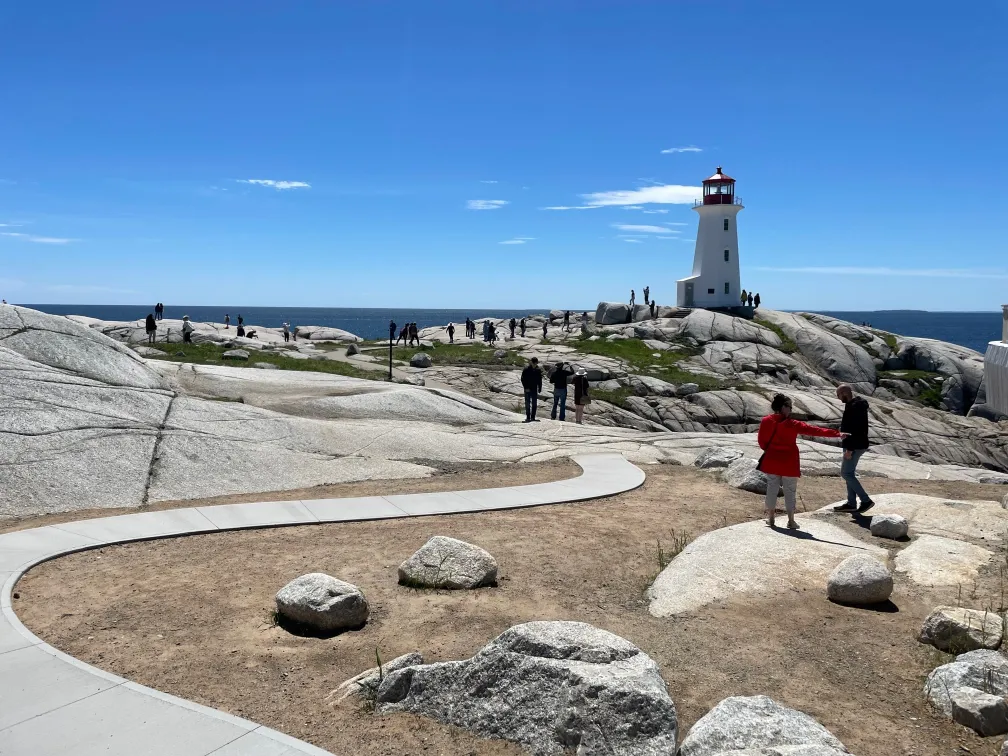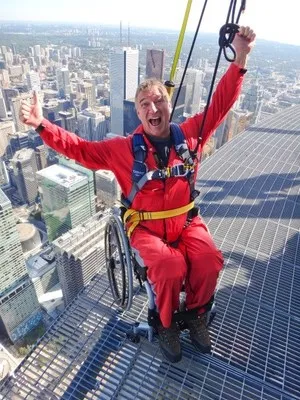
Listen to this Article
Canada is home to many world-renowned tourist attractions which helped draw 22.1 million visitors to our country in 2019. Yet with 1 in 5 Canadians, and over 1 billion people worldwide identifying as having a disability, ensuring these tourist destinations are accessible is essential to allowing everyone to participate fully in these experiences.
At this year’s Accessibility Professional Network conference, #APN2023: Building Together presented by Royal Bank of Canada, representatives of tourist destinations came together to discuss the need of ensuring our tourist attractions are accessible. The panelists included: Peter George, Chief Operating Officer at CN Tower; Omer Dagan, Business Development Sr. Analyst of Whistler Blackcomb; and Matt Neville, Principal Planner at Build Nova Scotia. The panelists discussed how putting people first creates greater inclusion at their three destinations across Canada.
Whistler- Blackcomb
One of Whistler-Blackcomb’s values is inclusiveness. “It is why we are prioritizing opportunities for everyone to experience these incredible environments,” Dagan said.
There are challenges involved in creating accessible experiences on a mountain landscape, but they have not let that stop them. Whistler-Blackcomb has seen success in one area in particular: adaptive mountain biking. Whistler-Blackcomb is home to the first bike park with lift access and hosts the largest bike festival in the world. Ensuring everyone has access to the sport is important to Whistler-Blackcomb.
One way to improve access of the trails was to think about how those on an adaptive bike use the environment. Through continuous consultation with the community, advocates and businesses, Whistler-Blackcomb incorporated the Kootenay Adaptive Mountain Biking Trail Standards to many of their trails.
“The detailed and well thought out standards allowed us to understand things like the minimum size for a bridge or wooden structure, best practices for lift loading and extraction,” Dagan said, adding, “We added signage to create a reference point for adaptive bike users.” This understanding of why people come to Whistler helps guide how to begin making more and more mountain activities inclusive for all.
CN Tower
“People have to come first,” George said, emphasizing this statement throughout his presentation on the journey of creating an accessible CN Tower. He added, “The CN tower is more than an attraction; it is Canada’s celebration destination. We want it to be inclusive for everyone to come and have a great time.”

The CN Tower, built 50 years ago, is one of the most iconic attractions in Canada and hosts 1.5 million visitors per year. In 2022, the CN Tower achieved Rick Hansen Foundation Accessibility CertificationTM (RHFAC) Gold in recognition of its efforts to create an accessible space for all to enjoy.
Their journey began in 2017 with their first RHFAC rating. George learned they had a long way to go to become accessible. But after working with an accessibility consultant to implement the learnings from their rating, they have made enormous progress, and are continuing to make large upgrades to the space to ensure everyone has access to all that the building has to offer.
“We have to work every day to eliminate barriers for all, from top to bottom,” George said, adding, “The most important thing we did was weave accessibility right into the fabric of our organization.”
Peggy’s Cove
Built in 1915, Peggy’s Cove Lighthouse stands tall against a village of 35 that welcomes nearly 750,000 visitors annually. The lighthouse itself is a popular tourist destination in Nova Scotia.
When the opportunity arose years ago to upgrade the old site, Neville explained that Build Nova Scotia had one objective: improve the visitor experience. “It is an iconic landmark that so many visitors interact with every year,” Neville said, adding, “The problem was, it wasn’t a place for everyone. Not even close.”
Neville credits their consultation efforts for much of the success of the project. In 2022, Peggy’s Cove Lighthouse achieved Gold certification through RHFAC. “We worked with allies, those with lived experience, experts, those who were most affected. It was a constant dynamic process,” Neville said.
Neville explained that the team would get input, then “try to achieve as much as they possibly could to make it a little bit better,” before inviting people back to take another look. This iterative process of continuously collecting feedback from those with lived experience helped put users first and try and make the space as accessible as possible and immerse everyone in the beautiful environment.
From the snowy peaks of Whistler Mountain to the urban cityscape of Toronto, to the rocky shores of Peggy’s Cove, Canada’s most accessible tourist destinations have one thing in common: putting people first.
If you are interested in learning more about how to make the built environment more physically accessible, visit RickHansen.com/RHFAC
